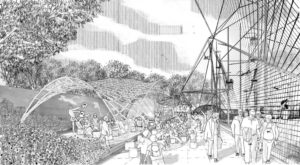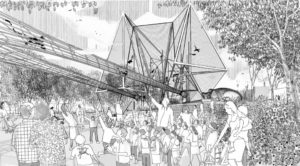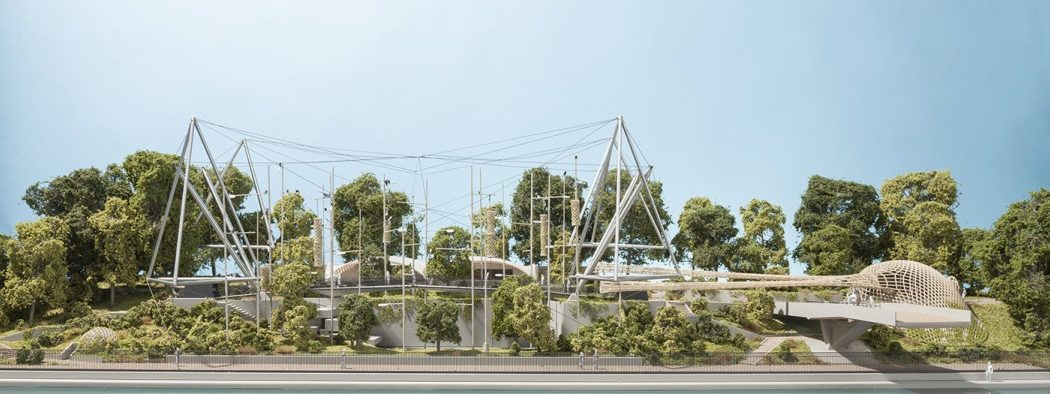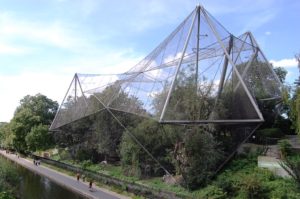London Zoo is the world’s oldest scientific zoo. It was opened in London, England on April 27, 1828, and was originally intended to be used as a collection for scientific study.
In 1831 or 1832, the animals of the Tower of London menagerie were transferred to the zoo’s collection. It was eventually opened to the public in 1847. Today, it houses a collection of 698 species of animals, with 20,166 individuals, making it one of the largest collections in the United Kingdom. The zoo is sometimes called Regent’s Zoo.
It is managed under the aegis of the Zoological Society of London (established in 1826), and is situated at the northern edge of Regent’s Park, on the boundary between the City of Westminster and the borough of Camden (the Regent’s Canal runs through it).
As well as being the first scientific zoo, ZSL London Zoo also opened the first Reptile house (1849), first public Aquarium (1853),[11] first insect house (1881) and the first children’s zoo (1938).
One of its best-known features is the Snowdon Aviary, which currently houses green peafowl, sacred ibis, little egrets, cattle egrets, northern bald ibis and grey-headed gulls.
This historic Grade II* listed structure, designed by Cedric Price with Frank Newby and Lord Snowdon in 1962, was, and still is a sensational statement. It was the first aviary in Britain that gave visitors a “walk-through” experience, bringing them closer to the birds in their natural habitat.
Now, on September 13, 2017, famed London-based architecture firm Foster + Partners’ plans for the rebirth of the Snowdon Aviary at have received planning approval from Westminster Council.
 The renovated design will adapt the heritage structure to suit its new inhabitants – a troop of colobus monkeys and parrots – and offers visitors an enhanced experience.
The renovated design will adapt the heritage structure to suit its new inhabitants – a troop of colobus monkeys and parrots – and offers visitors an enhanced experience.
It replicates their natural habitat, with a series of vertical elements at different heights that the monkeys can climb onto, encouraging them to leap, jump, and swing to the higher levels of the aviary.
Norman Foster, Founder and Executive Chairman, Foster + Partners said: “The rebirth of the Snowdon Aviary continues our work with historical structures. It is about the fusion of the old and new, but also about repurposing this extraordinary structure. The brand-new walk-though home will allow it to extend its role for decades to come. It will ensure the preservation of an iconic structure and honour its distinguished authors from the past, while preserving a unique built example of Cedric Price’s work.”
 The proposal also features an education and community space for Zoo visitors. Hosting up to 30 people, the indoor space will allow school groups to learn more about the colobus monkeys, their habitat and conservation, ZSL’s history and about the architectural legacy of the Zoo.
The proposal also features an education and community space for Zoo visitors. Hosting up to 30 people, the indoor space will allow school groups to learn more about the colobus monkeys, their habitat and conservation, ZSL’s history and about the architectural legacy of the Zoo.
Professor David Field, the Zoological Director, said “We’re delighted that the Council has recognised the value of the restoration of ZSL London Zoo’s Snowdon Aviary, and has granted us planning permission to carry out this exciting work. The new exhibit is set to be turned into a walk-through colobus monkey enclosure, which will give visitors a unique and up-close experience of the stunning primates.”
“Our plans for the Aviary will both improve its use as an important habitat for our animals and ensure it serves as an educational hub for the millions of people who visit the Zoo to be inspired by wildlife – while recognising its heritage status and prominent position on the Regent’s Canal,” he concluded.
All images courtesy of Foster + Partners unless otherwise credited.


